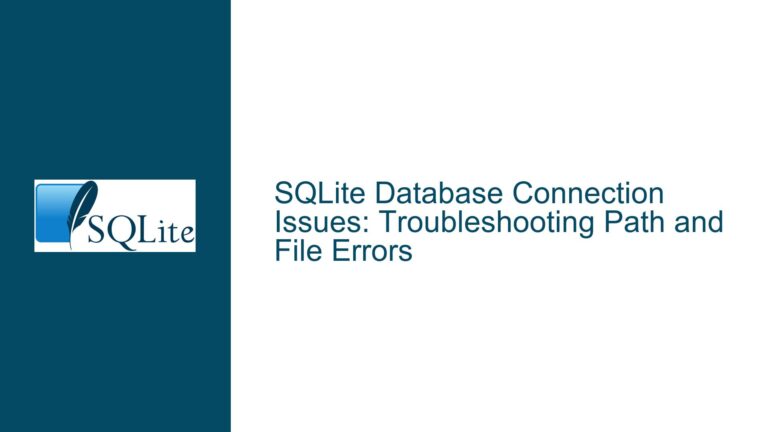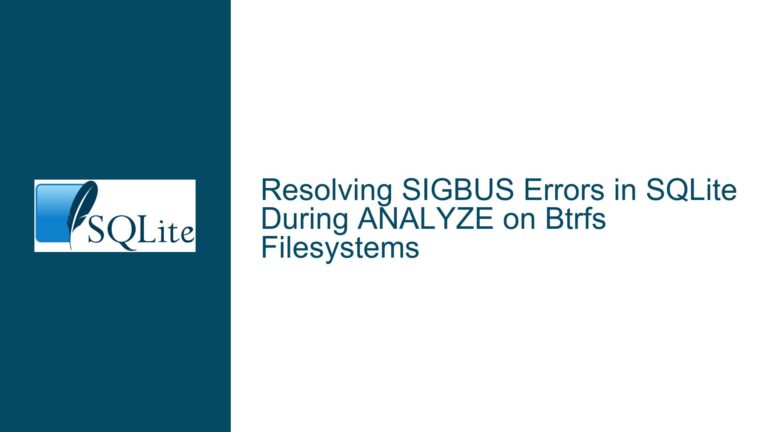SQLite Parameter Binding: Naming Conventions and Usage
Parameter Binding Mechanics in SQLite
SQLite’s parameter binding mechanism is a powerful feature that allows developers to safely and efficiently insert user input into SQL statements without risking SQL injection attacks. The core of this mechanism revolves around the use of parameter markers, which can be named or unnamed. Named parameters are prefixed with symbols like :, @, or $, followed by a name, whereas unnamed parameters are represented by a simple ?. The way SQLite handles these parameters is crucial for developers to understand, especially when dealing with dynamic SQL generation or automated query construction.
When a SQL statement is prepared, SQLite scans the statement from left to right, identifying each parameter marker. For unnamed parameters, SQLite assigns a sequential number based on their order of appearance. Named parameters, however, are treated differently. SQLite creates a mapping between the parameter name and a position in the parameter array. This mapping is essential for functions like sqlite3_bind_parameter_index and sqlite3_bind_parameter_name, which allow developers to interact with parameters by name or by position.
The process begins with the initialization of a parameter count set to zero. As SQLite encounters each parameter marker, it increments this count and records the name-to-position mapping for named parameters. This ensures that each parameter, whether named or unnamed, is assigned a unique position in the parameter array. The array’s size is determined by the highest parameter number encountered, and functions like sqlite3_bind_parameter_count return this size, providing developers with the necessary information to bind values correctly.
Common Pitfalls in Parameter Naming and Binding
One of the most common issues developers face when working with SQLite parameter binding is misunderstanding how parameter names are assigned and referenced. A frequent misconception is that SQLite automatically generates names for parameters prefixed with @ or :. However, as clarified in the discussion, SQLite does not generate names for these parameters. Instead, it uses the exact name provided by the developer. This means that if a parameter is named @boogaloo in the SQL statement, the name recorded by SQLite is exactly @boogaloo.
Another potential pitfall is the handling of unnamed parameters. Since unnamed parameters are represented by ?, they are assigned positions based on their order of appearance. This can lead to confusion when dynamically generating SQL statements, as the order of parameters must be carefully managed to ensure that values are bound to the correct positions. Additionally, the use of numbered positional parameters (?nnn) can complicate matters, as SQLite will set the parameter count to the highest number encountered, potentially leaving gaps in the parameter array.
Developers must also be cautious when using functions like sqlite3_bind_parameter_index and sqlite3_bind_parameter_name. These functions rely on the exact names used in the SQL statement, and any mismatch between the names used in the statement and those used in the binding functions can result in errors or incorrect parameter binding. This is particularly important when working with automated query generation, where parameter names might be constructed dynamically based on column names or other variables.
Best Practices for Parameter Binding and Troubleshooting
To avoid the pitfalls associated with SQLite parameter binding, developers should adhere to several best practices. First and foremost, it is essential to consistently use named parameters when possible. Named parameters provide clarity and reduce the risk of errors caused by incorrect parameter ordering. When using named parameters, developers should ensure that the names used in the SQL statement match those used in the binding functions exactly.
When working with unnamed parameters, developers should carefully manage the order in which parameters appear in the SQL statement. This can be achieved by maintaining a clear and consistent parameter ordering scheme, especially when dynamically generating SQL statements. Additionally, developers should avoid using numbered positional parameters unless absolutely necessary, as they can complicate the parameter binding process and lead to potential errors.
Another important best practice is to validate parameter names and positions before binding values. This can be done using functions like sqlite3_bind_parameter_index to verify that a parameter exists and to retrieve its position. Similarly, sqlite3_bind_parameter_name can be used to retrieve the name of a parameter at a specific position, providing an additional layer of validation.
In cases where parameter binding issues arise, developers should first verify that the parameter names and positions used in the SQL statement match those used in the binding functions. This can be done by printing or logging the SQL statement and the parameter names and positions before executing the query. Additionally, developers should check the return values of SQLite functions like sqlite3_bind_parameter_index and sqlite3_bind_parameter_name to ensure that they are returning the expected results.
Finally, developers should be aware of the limitations and nuances of SQLite’s parameter binding mechanism. For example, SQLite does not support binding parameters to certain parts of a SQL statement, such as table or column names. In such cases, developers must use alternative approaches, such as dynamically constructing the SQL statement with the appropriate names before preparing and executing it.
By following these best practices and understanding the intricacies of SQLite’s parameter binding mechanism, developers can avoid common pitfalls and ensure that their SQL statements are executed safely and efficiently. This not only improves the reliability and performance of their applications but also enhances security by reducing the risk of SQL injection attacks.






